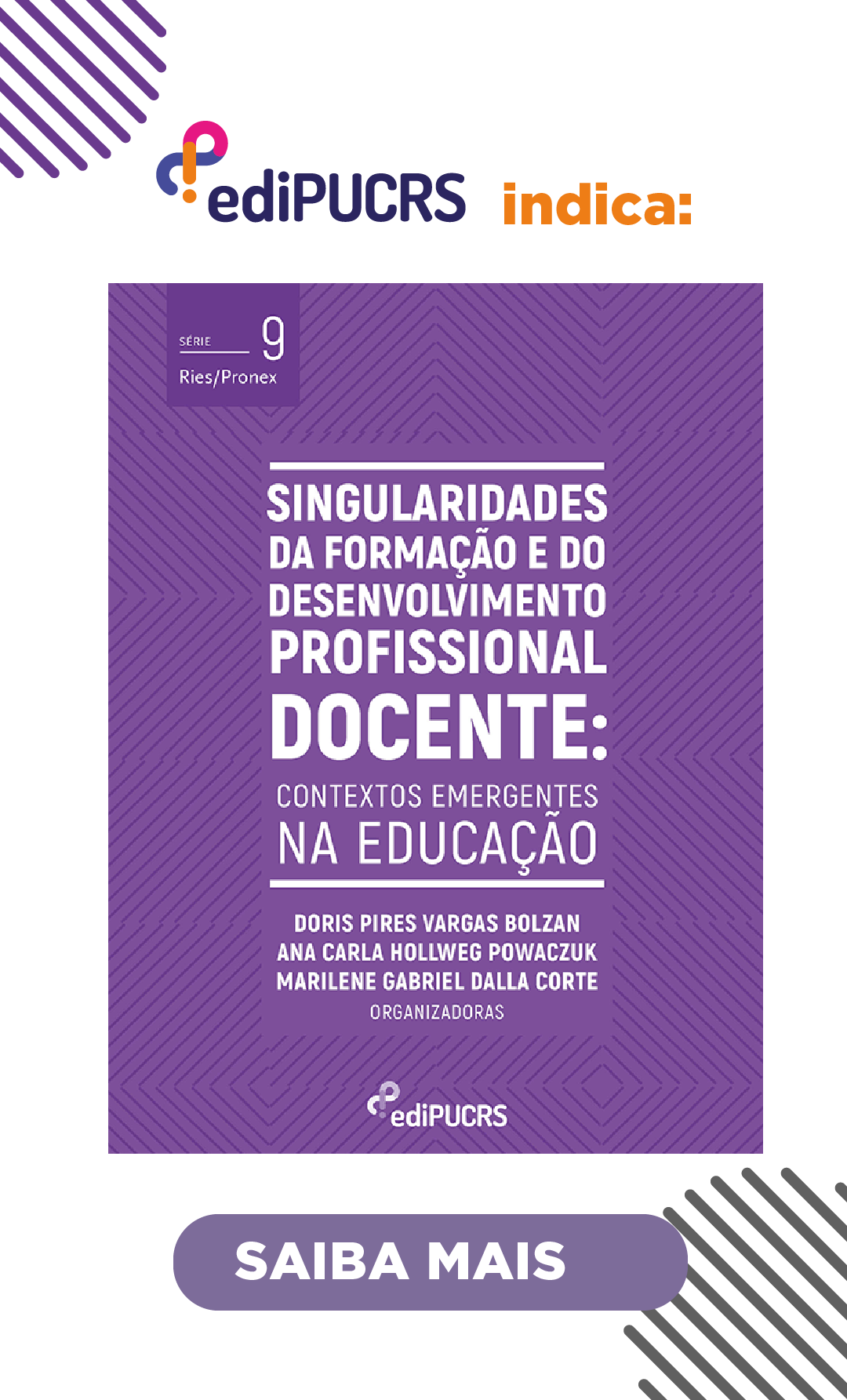The use of prompts to instigate “Vygotsky’s Inner Speech” helps in the solution of mathematical problems with the use of TICs?
DOI:
https://doi.org/10.15448/2179-8435.2021.1.40240Keywords:
Vygotsky, Inner-speech, Problem-solving, Prompt, ICTsAbstract
Based on the recent research by “Vygotsky’s Inner Speech” Does it help in the solution of mathematical problems with the use of ICTs? (2017) and in the studies of Berk (1994) that present good results regarding the theory of the Inner Speech of Vygotsky and its connection to problem solving, we decided to start this research to encourage the use of private dialogue through the use of ‘prompts’. With a methodology similar to Behrend (1992), we observed and recorded 15% of the students from the mathematics course of PUCRS (n = 11) solve two constructional problems in the digital platform GeoGebra. We explained to participants the importance of inner speech and constantly reminded them, via prompts, of this importance. Our analysis has a p-value of 0.0177 (p < 0.05) using Student’s T-Test SPSS, as well as sufficient clues to reject our null hypothesis (The use of prompts to instigate the use of “Vygotsky’s Inner Speech” does not help solve mathematical problems in ICTs).
Downloads
References
BANNERT, Maria.. Promoting self-regulated learning through prompts. Zeitschrift für Pädagogische Psychologie, v. 23, n. 2, p. 139-145, 2009. https://doi.org/10.1024/1010-0652.23.2.139
BEHREND, Douglas A.; HARRIS, Lynn L.; CARTWRIGHT, Kelly B. Morphological cues to verb meaning: verb inflections and the initial mapping of verb meaning. Journal of Child Language, v. 22, n. 1, p. 89-106, 1992. https://doi.org/10.1017/s0305000900009648
BERK, Laura E. Why Children Talk to Themselves. Scientific American, Estados Unidos, v. 271, n. 5, p. 78-83, 1994. https://doi.org/10.1038/scientificamerican1194-78
BURBULES, Nicholas C. Dialogue in Teaching: Theory and Practice. New York: Teacher’s College Press, 1993.
DANTE, Luiz R. Formulação e resolução de problemas, teoria e pratica. São Paulo: Ática, 2011.
FIORENTINI, Dario. Alguns modos de ver e conceber o ensino da matemática no Brasil. Zetetike, Campinas, v. 3, n. 1, 2009. https://doi.org/10.20396/zet.v3i4.8646877
FLAVELL, John H.; MILER, Patricia H.; MILER, Scott A. Cognitive Development. New Jersey: Englewood Cliffs, 1993.
GUERRERO, Maria C. M. Early stages of L2 inner speech development: what verbal reports suggest. International Journal of Applied Linguistics, v. 14, n. 1, p. 90-112, 2004. https://doi.org/10.1111/j.1473-4192.2004.00055.x
GUILHERME, Alexandre; MORGAN, W. John. Philosophy, Dialogue and Education: Nine Modern European Philosophers. London and New York: Routledge. 2018.
GUILHERME, Alexandre A.; BRENNER, Cristian B. “Vygotsky’s Inner Speech” Ajuda na solução de problemas matemáticos em TICs? Revista Educação Matemática Pesquisa, São Paulo, v. 19, n. 2, p. 421-434, 2017. https://doi.org/10.23925/1983-3156.2017v19i2p421-434
GUZMÁN, Miguel de. Enseñnza de las ciencias y la matemática. Revista Iberoamericana de Educación, v. 43, p. 19-58. 2007. https://doi.org/10.35362/rie430750
IFENTHALER, Dirk. Determining the effectiveness of prompt for self-regulated learning in problem-solving scenarios. Journal of Educational Technology & Society, v. 15, n. 1, p. 38-52, 2012. Disponível em: https://psycnet.apa.org/record/2012-24238-003
KIRCH, Max S. Non-Verbal | Communication across Cultures. The Modern Language Journal, v. 63, n. 8, p. 416-423. https://doi.org/10.2307/326027
PIAGET, Jean. A linguagem e o pensamento da criança. Tradução de CAMPOS, M. Rio de Janeiro: Fundo de Cultura, 1959. [1923].
______. O raciocínio na criança. Tradução de CHAVES, V. R. Rio de Janeiro: Record, 1967. [1924].
POLYA, George. A Arte de Resolver Problemas. Tradução de Heitor Lisboa de Araújo. Rio de Janeiro: Editora Interciência, 1978.
SOKOLOV, Alain N. Inner speech and thought. Tradução de ONISCHENKO, G. T. New York: Plenum Press, 1972.
VAN DE WALLE, John A. Matemática no Ensino Fundamental: formação de professores e aplicação em sala de aula. Porto Alegre: Artes Médicas, 2009.
VYGOTSKY, Lev. S. A formação social da mente. São Paulo: Martins Fontes, 1998.
______. Pensamento e Linguagem. São Paulo: Martins Fontes, 1998.
______. Mind in society: The development of higher psychological processes Cambridge. Mass: Harvard University Press, 1930/1979.
VIGOTSKY, Lev Semenovitch; LURIA, Alexander Romanovitch; LEONTIEV, Alex N. Linguagem, desenvolvimento e aprendizagem. São Paulo: Ícones, 1988.
Downloads
Published
How to Cite
Issue
Section
License
Copyright (c) 2021 Educação Por Escrito

This work is licensed under a Creative Commons Attribution 4.0 International License.
Copyright
The submission of originals to Educação Por Escrito implies the transfer by the authors of the right for publication. Authors retain copyright and grant the journal right of first publication. If the authors wish to include the same data into another publication, they must cite Educação Por Escrito as the site of original publication.
Creative Commons License
Except where otherwise specified, material published in this journal is licensed under a Creative Commons Attribution 4.0 International license, which allows unrestricted use, distribution and reproduction in any medium, provided the original publication is correctly cited.





